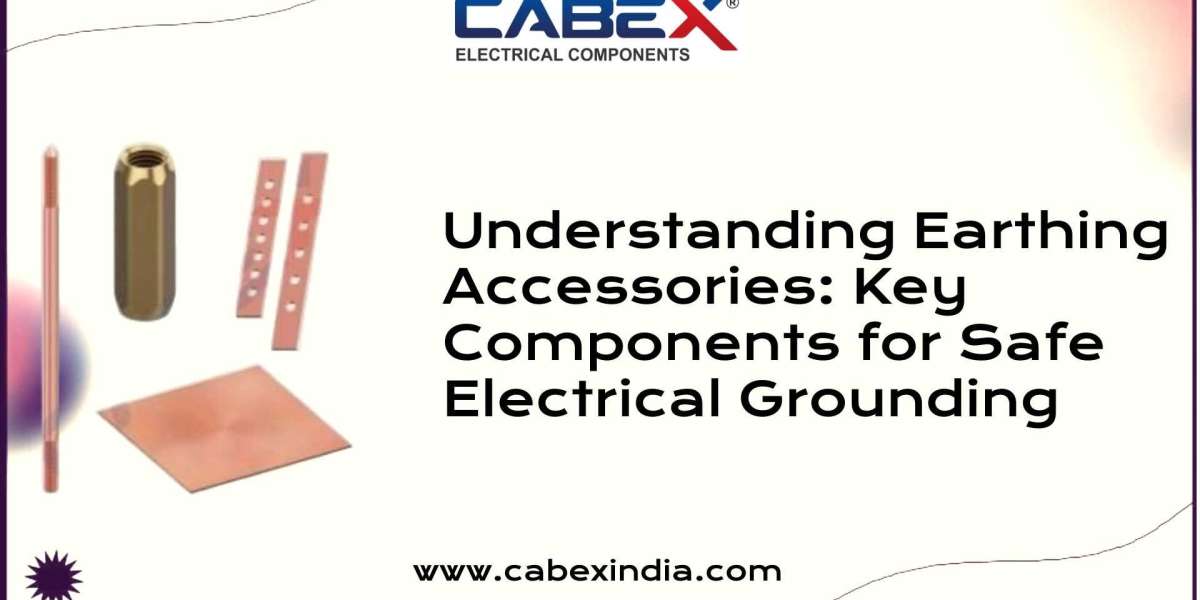Introduction
Earthing Accessories are critical components that ensure the safe and efficient dissipation of electrical currents into the ground. They play a vital role in protecting people, equipment, and electrical systems from electrical faults, short circuits, and lightning strikes by providing a direct path for excess electrical energy to safely discharge into the earth. Earthing accessories are widely used in residential, commercial, and industrial installations, ensuring compliance with safety standards and protecting systems from damage.
Importance of Earthing Accessories
Proper earthing, also known as grounding, is essential for electrical safety. It prevents electrical shocks, reduces the risk of fire, and protects equipment from damage due to power surges or faults. Earthing accessories help create a reliable grounding system, ensuring electrical systems operate safely and efficiently.
Common Types of Earthing Accessories
- Earthing Clamps
Earthing clamps are used to securely connect earthing conductors to rods, pipes, or other grounding structures. They ensure a stable connection, which is essential for an effective grounding system. - Earth Rods
Earth rods, also known as ground rods, are metal rods driven into the ground to dissipate electrical currents. Made from copper or galvanized steel, these rods are a key component of grounding systems in both residential and industrial applications. - Earth Pit Covers
Earth pit covers protect the inspection pit where the earth rod is located. These covers ensure easy access for maintenance while keeping the earthing system protected from environmental factors such as water, dust, and debris. - Earthing Strips and Conductors
These strips or wires connect the electrical system to the earth. They are typically made from copper, aluminum, or galvanized steel, offering high conductivity to ensure efficient dissipation of electrical energy. - Bimetallic Connectors
Bimetallic connectors are used when connecting two different metals in the earthing system (e.g., copper and aluminum). They help prevent galvanic corrosion, ensuring the longevity and reliability of the grounding system. - Earth Plates
Earth plates are large flat conductive plates that are buried in the ground. They provide an extended surface area for dissipating electrical currents, making them useful in areas where driving an earth rod into the ground may not be feasible. - Earthing Busbars
Busbars are metal strips or bars that serve as a common connection point for multiple earthing conductors. They are widely used in industrial settings to simplify the connection and distribution of earthing circuits. - Earthing Electrode Backfill Compound
This compound is used to enhance the conductivity around earth rods or plates. It ensures consistent performance of the earthing system by maintaining low resistance between the earth electrode and the surrounding soil, even in harsh environmental conditions.
Benefits of Proper Earthing Accessories
- Enhanced Safety
Properly installed earthing accessories ensure that any fault currents or electrical surges are safely discharged into the ground, preventing dangerous electrical shocks and reducing fire hazards. - Equipment Protection
Earthing systems protect sensitive electrical equipment from damage due to power surges, lightning strikes, or other electrical faults. This minimizes downtime and repair costs. - Compliance with Standards
Using high-quality earthing accessories ensures compliance with international safety standards such as IEC, NEC, and IEEE, safeguarding the system against legal and regulatory issues. - Efficient Electrical Performance
A well-designed earthing system improves the overall performance of electrical installations by reducing voltage fluctuations and ensuring stable power distribution.
Applications of Earthing Accessories
- Residential Buildings
Earthing accessories are used in homes to ground electrical systems, protecting inhabitants from electrical faults and shocks. - Industrial Facilities
In factories, manufacturing plants, and data centers, earthing accessories are critical for protecting expensive equipment and ensuring safe working conditions. - Telecommunication Towers
Earthing systems are essential for grounding communication equipment and antennas, protecting them from lightning strikes and electrical surges. - Power Distribution Networks
In power transmission and distribution systems, earthing accessories play a crucial role in maintaining the safety and reliability of electrical networks.
Conclusion
Earthing accessories are indispensable for creating a safe and effective electrical grounding system. Whether it's for residential, commercial, or industrial installations, the right combination of earthing components ensures electrical systems operate safely, protecting people and equipment from electrical faults and hazards. Investing in high-quality earthing accessories is critical to achieving a reliable and durable grounding solution.








